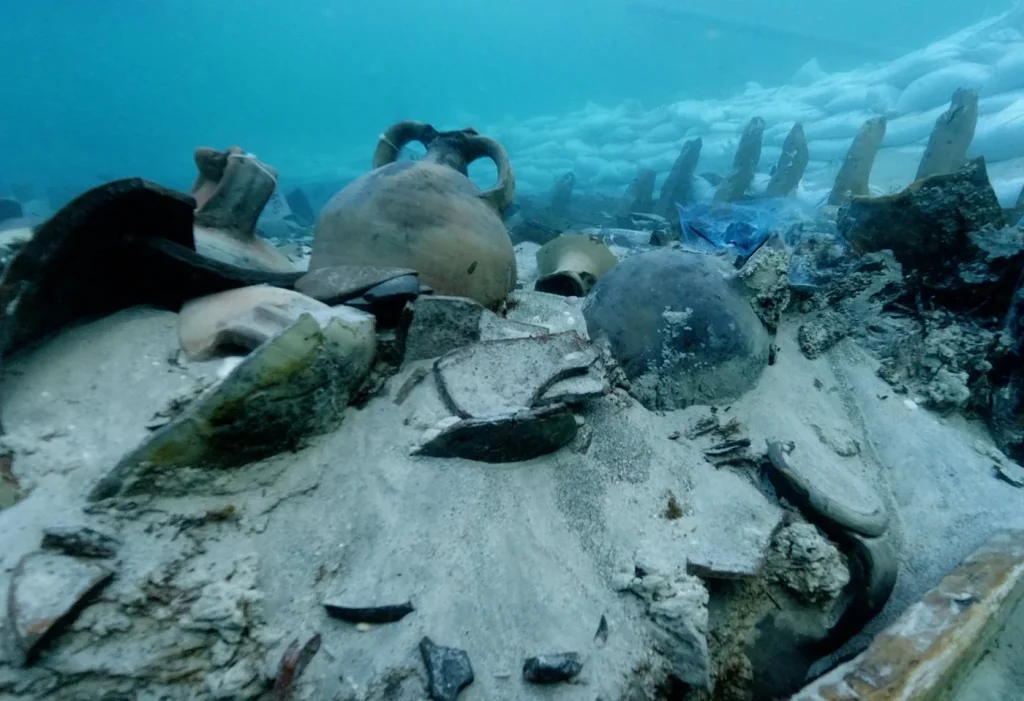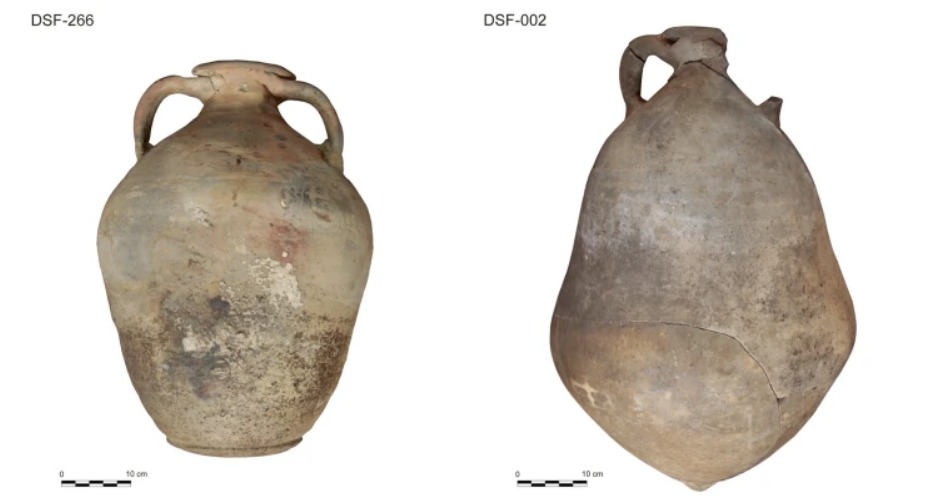
Unique amphora found in Roman shipwreck off Spain
A unique amphora was found in an ancient Roman shipwreck near Mallorca, one of Spain’s Balearic Islands.
The Roman shipwreck has attracted the interest of many researchers due to its preservation and interesting cargo.
A new type of ampharo was identified during the studies on the remains found in the cargo hold of the ship.

A team of archaeologists and researchers used a detailed analytical method to obtain new information about the amphora.
📣 Our WhatsApp channel is now LIVE! Stay up-to-date with the latest news and updates, just click here to follow us on WhatsApp and never miss a thing!!
The results of the analysis were published in the journal “Archaeological and Anthropological Sciences”.
The team used a variety of techniques to thoroughly investigate the site, including petrographic analysis, archaeozoology, relic analysis and the study of wood and plant remains.
Among the classical amphorae used to carry cargo in the ship’s cargo hold, a different type stood out. It was a new type of amphora called Ses Fontanelles I, found only in this shipwreck.

It was determined that more vegetable oil was transported with Ses Fontanelles I. It is heavier and larger than other amphorae.
On the amphorae, inscriptions called tituli picti, which contain information about who the amphora belongs to, what it contains and where it came from, attracted attention.
By reading these inscriptions, the researchers found out that the makers of the amphorae were Ausonius et Alunni and that the cargo contained fish sauce, olive oil and wine.
Residue analysis of the amphorae showed signs of grape derivatives, possibly used to add flavor or preserve its contents. In addition, traces of animal products were found, adding to the complexity of the cargo.
Cover Photo: Archaeological and Anthropological Sciences
You may also like
- A 1700-year-old statue of Pan unearthed during the excavations at Polyeuktos in İstanbul
- The granary was found in the ancient city of Sebaste, founded by the first Roman emperor Augustus
- Donalar Kale Kapı Rock Tomb or Donalar Rock Tomb
- Theater emerges as works continue in ancient city of Perinthos
- Urartian King Argishti’s bronze shield revealed the name of an unknown country
- The religious center of Lycia, the ancient city of Letoon
- Who were the Luwians?
- A new study brings a fresh perspective on the Anatolian origin of the Indo-European languages
- Perhaps the oldest thermal treatment center in the world, which has been in continuous use for 2000 years -Basilica Therma Roman Bath or King’s Daughter-
- The largest synagogue of the ancient world, located in the ancient city of Sardis, is being restored











Leave a Reply